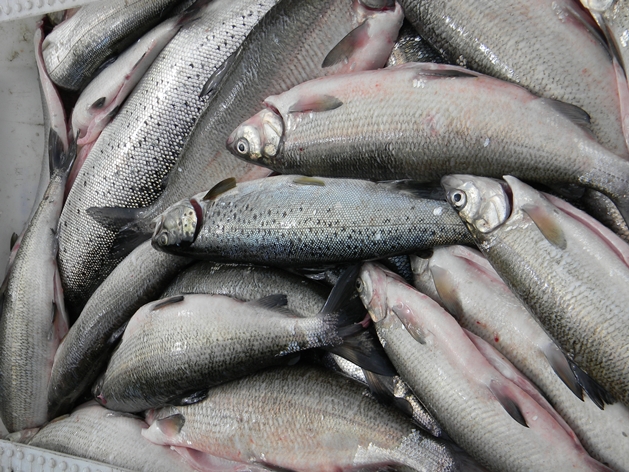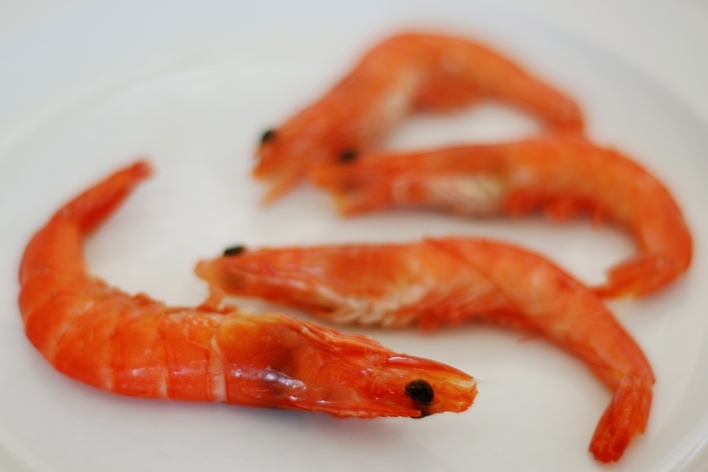 Fish that is fresh has shiny skin with the scales intact. Source: Maarit Lundbäck/Flickr
Fish that is fresh has shiny skin with the scales intact. Source: Maarit Lundbäck/Flickr
Unlike meat, which has a longer shelf life, seafood is extremely perishable. A catch that’s come in from the trawler at dawn can become unfit for consumption by early noon, simply because of improper storage and weather conditions. Seafood, in general is quite expensive, and it is essential to ensure that you’re buying good quality, fresh fish to get your money’s worth. Moreover, consuming spoilt or sub-par seafood can do more harm than good, causing infections apart from yielding a poorly tasting dish. “When it comes to handling seafood, a little care and understanding a few basics goes a long way,” says Ananya Banerjee, who is popular on the pop-up scene in the city with her Bengali, Ethiopian and German pop-ups. She gives us a few nifty tricks that we’re definitely going put to good use during our weekend seafood shopping.
One of the easiest ways to tell if the fish is fresh or not is by smelling it. Fresh fish has a clean smell or smells of the sea. Anything that is too strong smelling is sub-par or already well past its prime.
The skin of the fish too is an important indicator – shiny, slightly slimy scales are fine but it should not be too slippery.
Another easy way to gauge freshness is to observe the eyes of the fish. Fresh fish have eyes that are bright and shiny. Dull eyes usually are a sign of fish that’s been sitting out too long.
Learn how to make baked fish filets within minutes
If you are unsure about the freshness of the catch by smell alone, simply press your finger lightly into the flesh. Fresh fish has springy flesh while fish that is stale or on the verge of spoilage will show visible depression at the point of contact.
When buying bombil or Bombay duck, pick the fleshiest, fattest ones you can find. The fish has high water content which dries up as the hours pass, leading to spoiled or stale fish.
Fresh prawns are always more or less straight, the stale ones almost always shrivel and curl up. Ensure to buy unshelled prawns, as the exoskeleton prevents the prawns from rapid deterioration. Pick a batch of shelled prawns only if you know the fish monger well and can be assured of the quality provided.
When cleaning fish, thorough washing and clearing out the innards is enough. For prawns, wash thoroughly and ensure that the vein running along the side of the body is completely removed. Consuming prawns that have the vein intact or partially removed could cause allergies or stomach infections.
Watch how to make Bengali-style fish curry
If you’re buying fish and prawns in bulk, ensure it is cleaned well, thoroughly washed and packed in plastic bags or appropriate containers before freezing. Ensure that your seafood thaws properly before cooking.

Prawns have delicate flesh, so take them off heat once the flesh begins to turn opaque to prevent overcooking. Source: Azri/Flickr
The flesh of prawns is extremely delicate and can be easily overcooked, leaving you with rubbery, chewy seafood. To prevent this, cook till the prawns just begin to curl and turn slightly opaque. Remove from heat immediately, the heat absorbed is enough to cook the prawns just right.
Before you begin cooking bombil, press down on the fish with a heavy weight. Doing so will drain out the excess water from the flesh, and will help achieve that delectable crispness for your bombil fry.
To cook fish right, you need to understand how firm or tender the flesh is – as it will help you estimate the duration and the amount of heat needed for thorough cooking. Even then, pan searing the fish for long will result in a dry, tasteless dish. It’s best to flash fry each side in hot oil and remove from heat soon after.
Watch how to pan fry fish the right way









